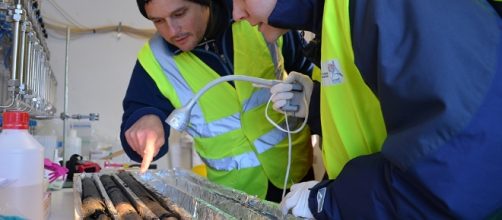Scientists are presenting a new way of harnessing the earth´s natural environment to store excess carbon dioxide (CO2). The new method involves preventing the gas produced by power plants and industries from entering the atmosphere by storing it in solid form in earth´s mantle rocks. For the first time, scientists were able to capture the gas from a power plant; the carbon dioxide was pumped underground and after sometime, the CO2 changed into a substance that could be permanently stored. This opened possibilities for a greater storage potential.
Global warming due to Carbon Dioxide
CO2 is a trace gas in the earth´s atmosphere, nevertheless, it contributes to warm the planet´s surface through the greenhouse effect. In recent years the warming of the earth due to increases in carbon dioxide in the atmosphere has augmented. The last three years have seen an increase in warming more rapidly than in the previous decade, despite the sun´s minimum. While CO2 absorbed by the earth´s oceans makes them more acidic, excess quantities of CO2 in the atmosphere warm the planet.
Storing CO2 produced by industries into solid rock
While natural processes in the earth make CO2 react with minerals found in rocks, turning CO2 into a solid mineral by other means is a slow process.
Scientists are researching on ways to utilize the same process, although in a more accelerated manner that would allow them to take CO2 from producing industries and store it faster and permanently. In a study aimed at reducing climate change, a group of scientists injected CO2 underground, which over time turned into mineralized CO2 opening possibilities for CO2 storage on a larger scale.
Storing CO2 into porous basalt rocks
For the storage of this gas into earth´s rocks, scientists chose basalt rocks, which are a type of rocks that are formed from volcanic activity and are abundant on the earth´s surface. The gas is captured from the industries and mixed with water and hydrogen sulfide; this mixture is then injected into basalt rocks 400-800 meters below the earth´s crust.
Calcium, iron and magnesium contained within basalt rocks reacts with CO2 creating solid carbonate minerals. Using this procedure, scientists have confirmed the CO2 can turn into mineral in less than two years.
Although the storage of CO2 has been contemplated on the ocean where the dangers of the process are far away from human communities, scientists are also considering storing CO2 on peridotite, another type of rock that is abundant in the ocean floor and in continental land. The management of carbon dioxide from industries is one step taken for controlling CO2 abundances; however, other actions should be taken into consideration to reduce global warming, as the carbon cycle does not originate only from power plants, but from the earth´s environment too.

